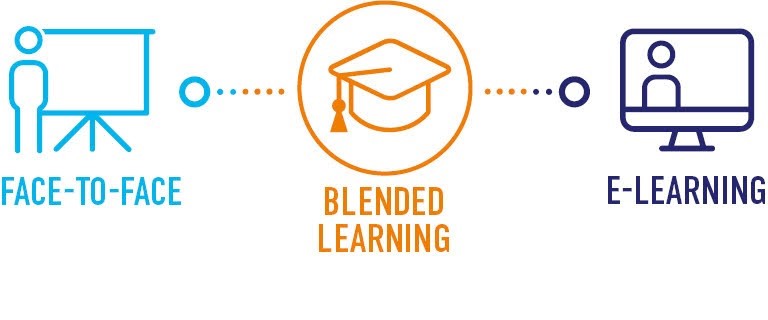Explore all MAP dissemination activities and materials. Stay tuned and follow us on all our social media channels!
BLENDED LEARNING PEDAGOGICAL MODEL: SHARING EDUCATIONAL REALITIES.

The current dynamic, which is nuanced, among other factors, by a 4.0 society where technological innovation and computerization, give its members a distinctive stamp which has led to a qualitative leap in education (Balladares, Avilés and Pérez, 2016).
On the one hand, the need to include new technologies in the educational space in order to respond to socio-educational and student demands continues to be a challenge for those involved in the teaching-learning process due to the continuous advance of the digital world (Roig and Moreno, 2020).
On the other hand, with this current Digital Revolution we are facing a paradigm shift that constitutes a first step if we assume that the overall purpose of education is to influence the cognitive, emotional and behavioural development of students in order to facilitate their successful adaptation to today's society.
In this sense, some models are currently on the rise in terms of educational decisions, both pedagogical and technological, providing a stimulus for new ways of teaching and learning that goes beyond spatial-temporal coordinates or the unidirectional transfer of information, but rather focuses on the collaborative construction of knowledge in divergent educational environments, offering a new universe of interactivity for didactic relations.
One of these models is Blended Learning, now frequently and habitually used in textbooks related to media and technologies in education. In the educational literature we find consensus in its definition: "it is the mixed use of face-to-face and non-face-to-face environments with the presence of technology and whose key idea is the selection of appropriate media for each educational need" (Bartolomé, 2008), which is evolving towards pedagogical designs in which the type of activities and the relationship between both environments are specified.
Although there are numerous studies that highlight its effectiveness compared to other teaching models (Niekerk and Webb, 2016), the questions that currently arise around Blended Learning are significant, which is why an invitation to a critical and shared reflection may be useful for committed and interested educational agents.
In other words, we should do the exercise of analysing issues that occupy our daily educational practice in order to find shared realities that guide us towards the joint search for flexible practices that are adaptable to our particular contexts.
I have recently had the opportunity to carry out this exercise with several colleagues in the field of education who also provide training through Blended Learning and there is a recurring shared question that I will explain below and that could be of interest for discussion: How do we evaluate the emotional state of students when faced with learning through Blended Learning? If we consider that generating a positive emotional climate is essential for any quality teaching-learning process, we might be interested in learning about good practices focused on promoting it or even preventing common, prestent situations such as dealing with stress. To do so, we can look at the way our students approach this type of learning, their perceptions and emotions. One example is offered by the Autonomous University of Barcelona, in collaboration with other European universities, with the development of a project based on Neuroeducation: SPOTLIGHTERS, to help teachers detect negative emotional states and thus offer self-control strategies, generating positive emotional climates for learning. It is shown to be applicable and can be customised to different settings and ages from primary to post-compulsory education (spotlighters.eu).
Other questions shared by professionals who develop Blended Learning practices are: How to achieve stable motivation and proactivity over time through Blended Learning? How to guarantee a culture of collaborative work among digital immigrant students through Blended Learning?
The dialogue remains open around these and other questions that may arise around the challenges posed by quality educational practices with Blended Learning and it would be very interesting to be able to generate a debate on a larger scale that not only clarifies our doubts but also allows us to continue learning from each other's professional experiences.
Author: Marta Robert Prius